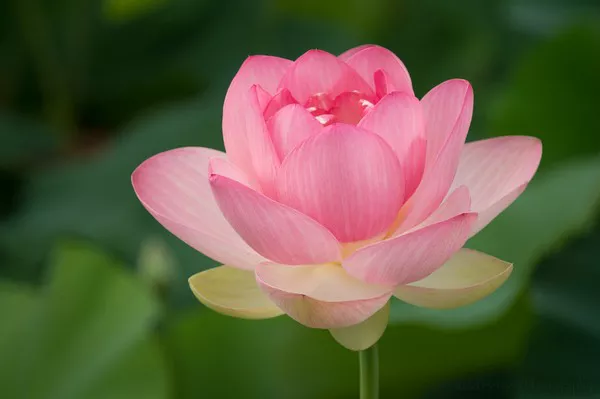Flowers have long captivated humanity with their beauty, fragrance, and intricate designs. Beyond their aesthetic appeal, flowers hold significant cultural, emotional, and symbolic meanings across various civilizations. Among the myriad interpretations attributed to flowers, the association with life and renewal is a prevailing theme that transcends cultures and epochs. This article delves into the profound symbolism of flowers, with a special focus on their representation of life, rejuvenation, and interconnectedness.
Flowers Through the Ages: A Historical Perspective
The symbolism of flowers dates back centuries, encompassing a rich tapestry of beliefs and traditions. From ancient civilizations to modern times, flowers have played a pivotal role in expressing emotions and conveying complex ideas. The concept of flowers representing life finds its roots in the natural cycles of birth, growth, decay, and rebirth observed in the plant kingdom. Early cultures, such as the Egyptians, Greeks, and Romans, embraced flowers as metaphors for the cyclical nature of existence and the eternal cycle of life and death.
1. Flora and Fauna: The Language of Flowers
In the Victorian era, the language of flowers, also known as floriography, gained prominence as a means of non-verbal communication. Each flower carried its own distinct message, allowing individuals to convey sentiments that were often suppressed or unspeakable in society. In this intricate language, flowers such as the daffodil and the cherry blossom became symbols of life and renewal. The daffodil, heralding the arrival of spring with its vibrant yellow blooms, epitomized the resurgence of life after the dormant winter months. Similarly, the fleeting yet enchanting beauty of cherry blossoms reminded people of life’s impermanence and the need to cherish every moment.
2. Birth, Rebirth, and New Beginnings
Flowers have been embraced in various cultural contexts to celebrate the cycles of birth, rebirth, and new beginnings. In Eastern cultures, the lotus flower holds profound significance. Emerging from the muddy depths to bloom gracefully on the water’s surface, the lotus embodies purity, enlightenment, and the potential for transformation. Its ability to rise above adversity and blossom in adverse conditions resonates deeply with the human experience of overcoming challenges and embracing new phases of life.
In Christianity, the lily has emerged as a symbol of purity, renewal, and resurrection. Often associated with the Virgin Mary, the lily’s pristine white petals mirror the purity of the soul and the promise of life beyond earthly existence. The Easter lily, specifically, embodies the concept of resurrection and the triumph of life over death, making it a prominent symbol during the Easter season.
3. Flowers as Metaphors for Connection and Unity
Beyond their representation of individual life, flowers are frequently used to symbolize the interconnectedness of all living beings and the unity of the universe. Indigenous cultures across the globe have revered flowers as symbols of harmony and equilibrium within nature. The intricate patterns and vibrant colors found in flowers mirror the diversity and beauty of life itself. In this way, flowers encourage us to recognize the inherent value of all living things and our responsibility to safeguard the delicate balance of the ecosystem.
4. Cultural Variances in Symbolism
The symbolism of flowers isn’t universal; it varies significantly across cultures. In Japanese culture, the cherry blossom (sakura) represents the transience of life, a concept known as “mono no aware.” The ephemeral nature of cherry blossoms serves as a reminder to embrace the fleeting moments of beauty and joy in life. Meanwhile, in Indian culture, the marigold holds dual significance: as an offering to deities and as a symbol of the cycle of birth and death.
In Native American traditions, the sunflower holds deep meaning as a symbol of strength, positivity, and spiritual connection. Its resemblance to the sun and its habit of following the sun’s path across the sky are seen as metaphors for seeking the light of truth and knowledge.
5. Flowers in Art and Literature
Throughout history, artists and writers have drawn inspiration from the symbolism of flowers to convey complex emotions and themes. Paintings, poems, and stories often incorporate flowers as metaphors for life’s journey, growth, and renewal. Vincent van Gogh’s iconic series of sunflower paintings, for instance, captures the vibrant essence of these blooms while also hinting at the artist’s personal struggles and aspirations.
Literary works such as William Wordsworth’s “Daffodils” and Emily Dickinson’s poems frequently utilize flowers to explore themes of nature’s resilience and the eternal cycle of life. These creative expressions underscore the enduring significance of flowers in reflecting on the profound meaning of life.
Conclusion
Flowers, with their intricate beauty and captivating fragrances, continue to enchant and inspire us. As symbols of life, renewal, and interconnectedness, they bridge cultures, languages, and epochs. The profound meanings attributed to flowers throughout history reveal humanity’s universal desire to comprehend the cycles of existence and the importance of embracing change and growth. In a world where chaos and uncertainty often prevail, the symbolism of flowers serves as a timeless reminder of the beauty that emerges from adversity and the eternal cycle of life.


